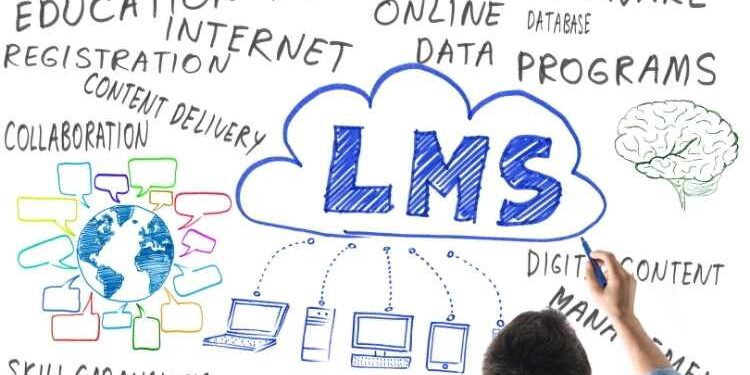“We need to bring learning to people, instead of people to learning.” – Elliot Masie.
If there is software that has seen tremendous demand in the last few years, it is the Learning Management System (LMS). It is designed to improve the teaching and learning experience in schools. Today more and more educational institutions are embracing new ways of teaching and learning through the features and functionalities offered by the learning management system.
However, many schools still consider LMS a luxury rather than a necessity. Consequently, they end up using a traditional or basic learning management system having the following drawbacks:
- No proper infrastructure
- Lack of tools used for teacher training
- Lack of active involvement of parents in their child’s academic journey
- Lack of quality control in the curriculum
- Lack of engaging elements in content delivery
- No focus on delivering assured learning outcomes to students
The perfect solution to all these gaps is an avant-garde learning management system. It gives an edge to schools over their competitors by enhancing the overall teaching and learning experience through an indispensable set of ultra-modern features. These include:
Effective Distribution of Study Materials
The best learning management system software gives easy access to study materials designed for aspiring students. Traditionally, the education system used basic ways of teaching in which teachers taught lessons according to the textbooks. As a result, teachers had to repeat the course if any student missed a part and thus had to spend more time and energy on a single topic.
On the contrary, an LMS is cloud-based and offers enormous benefits for teachers and students as all the content and learning materials can be stored in one place rather than spread over different drives and devices. Hence, students can easily access eLearning materials stored in a secured space in the cloud anytime, from anywhere, without the risk of losing them.
Track Progress and Performance
A state-of-the-art learning management system can also be doubled as a student information management system,allowing teachers and parents to track their child’s progress and performance records. For that purpose, it has a built-in tool for reporting and analytics, through which teachers and parents can track and measure student progress. After identifying underperforming students, teachers can provide them with supplemental resources to help improve their academic performance.
The digitalised changes that an LMS brings to the traditional education system enable teachers and parents to deliver better learning experiences to students. It acts as a bridge between students, teachers, and parents, eventually leading to better academic performance for learners.
Integration with Apps
An advanced learning management system is not a standalone system. Instead, it allows for seamless integration with other applications used by parents, teachers, and students. As a result, different stakeholders can access the desired data through respective software and applications.
This integration saves stakeholders’ time and provides the most up-to-date data to every user. Finally, the application integration enables stakeholders to communicate with each other smoothly.
Easy Implementation of Teacher Training Programs
One of the most significant benefits of using a leading-edge learning management system is that it enables easy implementation of teacher training programs. Schools do not need to print eLearning materials during teacher training programs.
Instead, the entire teacher training session can be held online with amalgamated storage of eLearning resources and materials. Thus, by bringing efficiency to different activities of an administration, a student information management system supports the “go green” environment initiative.
Increased Scalability
A highly-functional learning management system allows educational institutions to manage their functions and operations smoothly and seamlessly. It enables sharing courses on different platforms and serves a massive mass of users by managing a large amount of data without breaking down.
A well-designed LMS provides a complete solution for eLearning by integrating certain scalable features with the help of powerful servers and cloud technologies, ensuring reliability and efficiency.
Personalised Content
Personalisation of learning materials allows schools and teachers to cater to the specific educational needs of learners. With a next-generation learning management system, students can control what learning material they want to see in their dashboards, per their specific interests. Through personalisation, students get the opportunity to actively participate in what is being taught and take up various challenges in learning.
Remote Learning
An ideal learning management system ensures remote learning in schools and educational institutes. There is no need for the physical presence of teachers and students at schools through remote learning. Due to the COVID-19 pandemic outbreak, millions of schools adopted LMS. They shifted to remote learning to enable educators and learners to leverage online courses.
With the help of a student information management system, students can access study materials anytime, anywhere. On the other hand, teachers can upload video lectures for varied topics on the Internet, providing learners with classroom learning experiences even at home. Furthermore, teachers can efficiently improve or modify educational materials to keep up with the rapid changes in the education sector.
Final Words
Learning or student information management system is one of the most effective tools to transform the traditional education system with fun and engaging learning experiences. Teachers, students, parents, and school owners benefit from an LMS equally. Parents can check their child’s performance, teachers can keep track of students’ performance efficiently, students can access eLearning materials, and school owners can streamline their operations. Thus, a learning management system is no more a luxury for schools; but a necessity.
